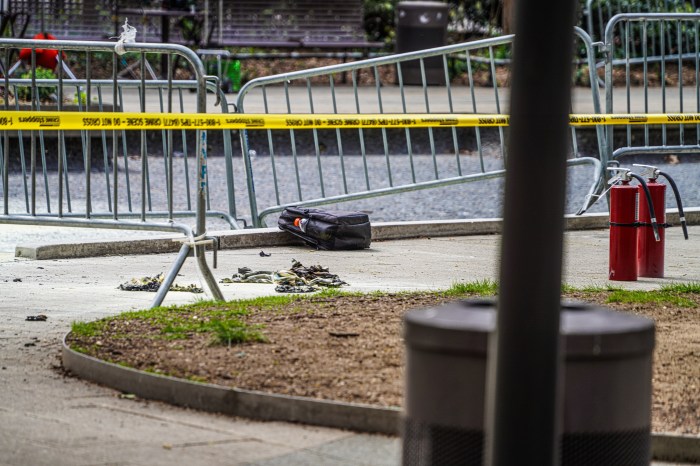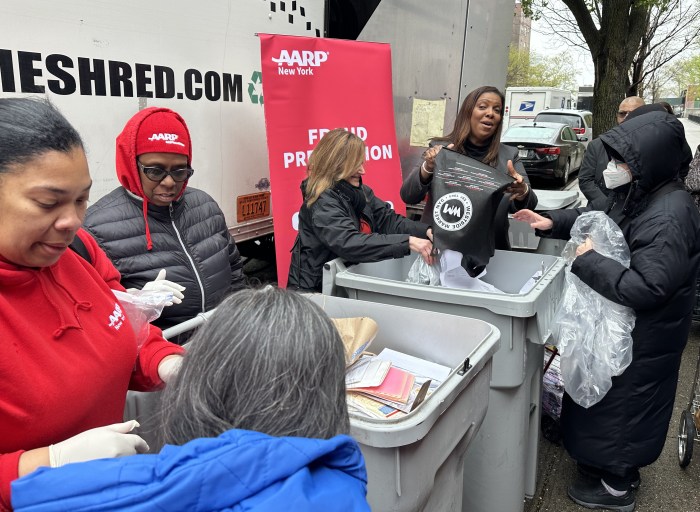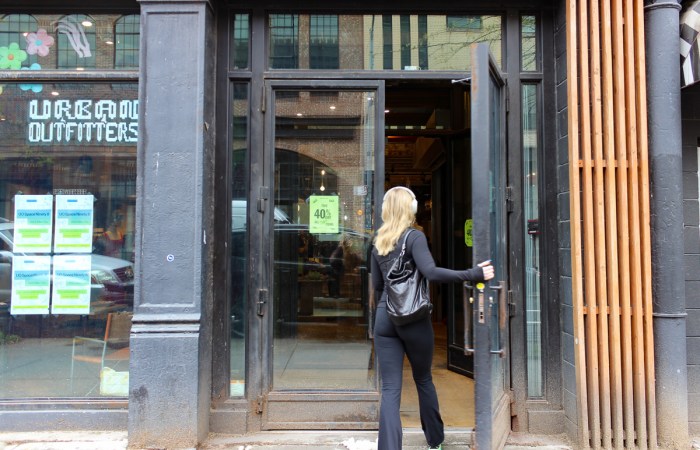BY ARTHUR S. LEONARD | A Manhattan Supreme Court judge has found that the 2001 amendments to New York City’s zoning law regarding adult businesses violate the First Amendment rights of those enterprises.
Changing course from some prior rulings he issued in the case, Justice Louis B. York found that the city failed to show that the additional restrictions enacted in 2001 to supplement those put in place in 1995 were supported by evidence showing they were substantially related to advancing any important city policy. York therefore struck them down as unjustified, content-based restrictions on constitutionally protected speech.
The City Council commissioned a study several decades ago about the effects of adult businesses on the communities in which they were located. That study, which purported to show that such businesses attract crime, lower property values and expose minors to sexually explicit images (mainly through their outdoor signs), was intended to provide support for proposed zoning restrictions that would sharply reduce the geographical area in which adult businesses could operate. The businesses would basically be excluded from residential and business districts with high pedestrian traffic and become much less visible in New York’s streetscape. Critics of the law complained at the time that the new regulations would confine adult businesses to relatively undeveloped or industrial areas on the edges of the outer boroughs.
According to U.S. Supreme Court precedents, zoning laws excluding adult businesses are content-based regulations of speech that can only be justified if serious “secondary effects” on the community are documented. Based on the study’s results, the Council, at then Mayor Rudy Giuliani’s strong urging, passed the 1995 amendments to the city’s zoning law, which, according to York’s opinion, “caused the dispersal and elimination of many adult establishments by requiring them to be 500 feet from each other, residences, houses of worship and schools.” The 1995 provisions also required that if a business wanted to provide sexually related goods and services and remain in an area where adult businesses were otherwise excluded, it would have to devote “a substantial portion” of the establishment to “non-adult uses.”
The city adopted an administrative regulation –– referred to as “the 60-40 rule” –– requiring that “less than 40 percent of the entity’s business could be devoted to adult activities.” Many adult businesses restructured their premises and diversified their stock and services to avoid being classified as an adult business so they could continue operating in residential and business districts. After sending inspectors to monitor compliance, the city determined based on their reports that there were many cases of “sham compliance.” The establishments were in literal compliance with the 60-40 rule, but, according to the city, they were still predominantly dealing in adult goods and services. The city moved to shut down the alleged “sham” establishments, and several lawsuits resulted.
Concerned that stringent enforcement of the 60-40 rule might be interpreted by courts as beyond the authorization of the 1995 amendments, the City Council approved additional amendments in 2001, which are the subject of York’s new ruling. The 2001 Council action imposed requirements intended to essentially foreclose exceptions and make it exceedingly difficult for any establishment to sell adult goods or services in the areas covered by the adult-uses zoning ordinance. Rather than clarify the legal status of the zoning efforts, however, the 2001 amendments merely spawned additional litigation.
York had previously upheld the amendments, finding they could meet a “rational basis” constitutional standard –– namely, that the plaintiffs could not show that the city had no rational reason for the statutory amendments. But higher courts disagreed, concluding that the amendments represented content-based regulation of free speech activity, and so must be subject to the more rigorous constitutional review that free speech is accorded. The cases were sent back to York for a new look under this more-searching standard.
Among the evidence York reviewed was testimony from experts retained by the businesses documenting the lack of secondary effects attributable to their operation.
One study, by Dr. Bryant Paul of Indiana University, surveyed neighborhood opinion, and found that, according to residents living near 60-40 businesses, “the overall quality of life in the 60-40 clubs’ areas was better, the 60-40 neighborhoods were safer, the 60-40 neighborhoods were a more preferable place to live, and the 60-40 neighborhoods were a preferred shopping area.”
Another expert cited by York, Dr. Daniel Lenz of the University of California at Santa Barbara, testified that “60-40 clubs are not associated with negative secondary crime effects, 60-40 clubs were not ‘hot spots’ for crime in their neighborhoods, crimes did not increase with the opening of a 60-40 club, and crimes did not decrease after the closing of a 60-40 club.”
Yet another expert looking at property values concluded that “proximity to a 60-40 club does not result in a diminution in value.” In fact, evidence suggested that property values went up near 60-40 clubs.
York also found that the original 1995 law had achieved its objective of reducing the number of adult establishments in the city and breaking up then-existing concentrations of such clubs in particular neighborhoods, such as Times Square and Chelsea.
The city presented an “expert witness” as well, but York found that he was not credible and gave no weight to his testimony, because the so-called expert’s only study involved a survey of real estate brokers that drew an extremely small response. This witness’s opinions, the judge found, lacked any “real world corroboration.”
Having found that the 1995 zoning ordinance provisions had effectively led to a reduction in number and the dispersion of adult businesses and that the businesses involved in this lawsuit had reconfigured to come within the original 60-40 requirements, York concluded the city could not justify the 2001 amendments. There was no study showing that these allegedly “sham” 60-40 clubs had generated the kind of secondary effects that are necessary to justify a zoning exclusion in light of First Amendment, free-speech protection against content-based regulation.
York noted that the original 1995 regulations gave the city the ability to establish that a business was acting in sham compliance so long as the city could demonstrate the negative secondary effects documented in the original City Council study. However, the judge wrote that he “cannot understand how an 18-year-old study of the negative effects of the 100 percent entities can be applied to the current 60-40 entities without determining the actual negative secondary effect of these institutions today.”
York issued a permanent injunction against enforcement of the 2001 provisions. Reporting on the decision on Aug. 31, the New York Law Journal commented that it would have no immediate practical effect, “because the 2001 law that it overturned was not enforced while lawsuits challenging its constitutionality winded through the courts.”
There is irony in this: Because the 60-40 stores were able to remain open for many years, their lawyers have the opportunity to commission additional studies to demonstrate the lack of adverse secondary effects from their operations.
The city is expected to appeal York’s ruling. Robin Binder, a city Law Department spokesperson, told the Law Journal, “We believe the court was right the first time when it ruled that 60-40 establishments have a predominant sexual focus,” referring to York’s earlier rulings in this case. “The city’s ability to regulate adult establishments is critical to preserving neighborhood quality of life.”
The Law Department has a reflexive reaction against any ruling that it loses, but perhaps — before going back to court — it would behoove the department to commission a new study to determine if the 60-40 business do, in fact, create negative secondary effects.


















